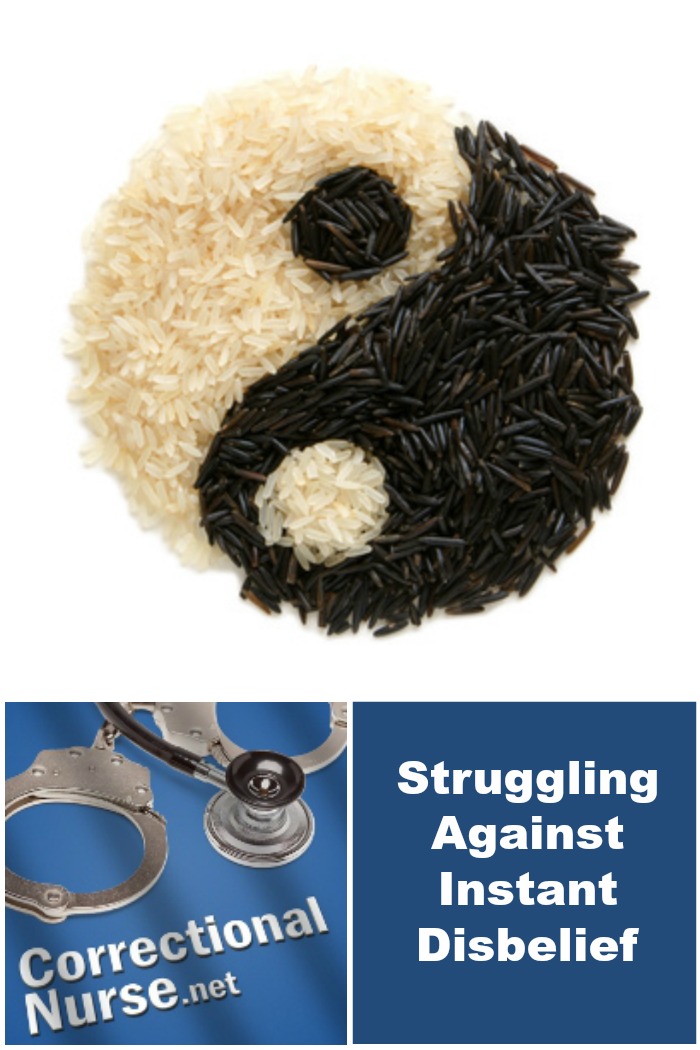 I’m at the Custody and Caring Conference in Saskatoon, Saskatchewan, Canada this week networking with correctional nurses from various Canadian settings along with correctional nurse leaders from the UK, US, Australia, Sweden, and Germany. Keynote speaker, Dawn Freshwater, shared her developing model of caring in nursing in the offender populations called Custodial Caratis. I was challenged to re-examine my own thoughts on caring in our setting and my own biases engrained in practice. Dr. Freshwater’s colleague, Liz Walsh, followed on with a session on research into pain management in the prison setting in the UK. She started by suggesting the struggle we have against instant disbelief of our patents over time when working in corrections. We have reluctance, for example, to prescribe pain medications in our settings that would be a part of treatment without hesitation in a traditional setting. How do we overcome our own biases to provide compassionate care?
I’m at the Custody and Caring Conference in Saskatoon, Saskatchewan, Canada this week networking with correctional nurses from various Canadian settings along with correctional nurse leaders from the UK, US, Australia, Sweden, and Germany. Keynote speaker, Dawn Freshwater, shared her developing model of caring in nursing in the offender populations called Custodial Caratis. I was challenged to re-examine my own thoughts on caring in our setting and my own biases engrained in practice. Dr. Freshwater’s colleague, Liz Walsh, followed on with a session on research into pain management in the prison setting in the UK. She started by suggesting the struggle we have against instant disbelief of our patents over time when working in corrections. We have reluctance, for example, to prescribe pain medications in our settings that would be a part of treatment without hesitation in a traditional setting. How do we overcome our own biases to provide compassionate care?
Do you struggle with instant disbelief in correctional nurse practice? Being conscious of the struggle is the first step to overcoming the effect on our clinical judgment. Instant disbelief can lead to early closure on our diagnostic reasoning efforts in a clinical situation. For example, if we determine early on that the patient is faking or overly exaggerating their pain, we are more likely to stop looking for other causes of the pain. This is called premature closure and is one of many decision-making biases that can negatively affect our clinical judgment. Another challenge in the struggle against instant disbelief is confirmation bias. Here we determine a diagnosis early and then look for evidence to confirm the diagnosis; at the same time disregarding evidence that does not confirm our diagnosis.
How can we balance a healthy respect for the potential for illicit activity, secondary gain, coerciveness and manipulation with the need to appropriately deliver nursing care? Often consciously and unconsciously, our nursing care is subjugated by the disciplinary structure of the care environment. Somehow we must balance the healthcare and custody perspectives within the same care environment and work culture. Freshwater suggests that we need a ‘collective commitment’ to caring in our setting that includes all disciplines. But how to do it? Where do you start in your setting? Her response? Enact the power that you have in the position and setting that you find yourself. What difference can you make in your world?
Photo Credit: © Popova Olga – Fotolia.com
Odessa McCleary says
Evidence and data. True being aware of the possibility of premature closure helps but remembering what my nursing school professors drilled into me is the key. Look at the data! What are the vitals do they show distress? Look at the body movement and language when you talk and distract the patient. Don’t make a decision until all the information is on the page.
I also enjoy reading these blogs and articles. Keep up the great work!
Lorry Schoenly says
So true, Odessa! Stick with the evidence – validate your feelings and intuition. Thanks for your great insights!
Linda Manous says
I find myself torn. Our Board of Nursing tells us to consider pain the “fourth vital sign” and we are supposed to ask the patient their pain level and believe him/her. BUT I have had so many patients in corrections be laughing and cutting up out in the waiting room and the minute he walks into the clinic proper suddenly can barely move and claims his 0-10 pain is “at least a 15”. OR they will calmly look at our various pain scales and calmly tell us it’s 10/10. You KNOW with behavior like that they have a hidden agenda. In an environment where they will cheek then trade gabapentin I just have a lot of trouble with this. Of course, the B of N offers no education re. pain and the addicted personality.
Lorry Schoenly says
This is definitely a problem for nurses in our specialty, Linda. Thanks for sharing your frustrations. I agree that we don’t get much guidance. Here is how I look at it. We are responsible to objectively evaluate pain. True, it is different for different people and we need to seriously consider what the patient is telling us. However, we also need to include observational data. It is not in our patient’s best interests to over-medicate them or provide medication for a secondary gain. However, this takes a team approach including other disciplines and our custody peers. That can be the rub.